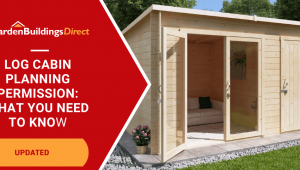Ventilation is something you don’t want to ignore in your garden gym. Without it, the space can get hot, stuffy, and damp, which isn’t great when working out. Keeping the air moving inside is straightforward, especially if the building has vents. If not, there are other ways to keep a steady supply. Here’s what you need to know, along with some helpful considerations.
Check if Your Garden Gym Has Built-In Vents
Some garden rooms have them, while others don’t—have a look to see if yours does. Vents are often placed high on the walls or near the roof, low on the walls, on opposite walls, or in doors or window frames. If you spot them in any of these placements, you’re off to a great start!
Keep in mind, though, that not all vents have the same design when it comes to their opening systems. For instance, an open design features a slotted or grille-like appearance. Think of them like a window left slightly ajar—air can flow freely without needing to be opened or closed
There are also adjustable vents and ones with covers. These designs might require you to open or close them depending on how much airflow you need. Still, it’s worth the effort to open them now and then if it means greater comfort while using your garden gym.
Opening the Windows Helps
Vents are great, but they might not always be enough. A bit more airflow from other sources, like windows, can make a noticeable difference. By simply opening them, you let in fresh air and allow stale air to escape.
The good thing is most garden rooms have windows, but here’s the tricky part: can they be opened? If your garden gym is converted from a shed, chances are the windows are fixed in place. However, if it’s in a log cabin, they probably can be propped open.
Tips: Open your windows to a gap of at least 4 to 6 inches (about the width of a small book). And if you have multiple windows, unlatch at least two to allow air to flow through the room.
Note that window designs vary depending on the model and manufacturer.
Fans Work as Alternatives
If opening the windows in your gym shed isn’t an option, installing fans will do. They come in compact sizes, and portable ones are usually hung on the wall or ceiling, so they don’t take up too much space. Freestanding options are also available if you prefer to skip the installation part.
Once set, turn them on during your workout to keep the air moving and make breathing easier. You will need to open the door, at least partially, so that the air has somewhere to go. If you’re in a sealed room, fans will only push air and moisture around the space. It needs to escape!
Use a Dehumidifier
Moisture can also manifest through your sweat and body heat. Plus, with less ventilation (during winter) and more moisture in the air, dampness can build up. This is where a dehumidifier becomes useful.
In its simplest form, a dehumidifier removes excess moisture in the air. This, in turn, ensures the air stays fresh and dry. It also keeps mould and mildew from forming on the gym equipment, walls, or flooring.
Note: A dehumidifier can work as an additional tool to help with ventilation in your garden gym.
Round-up
The best way to ventilate your garden gym is to let the vents do the work, or install one yourself if it doesn’t have one. Opening the windows works just as well, too, but make sure yours can be opened.
If they can’t, installing fans on the ceiling is a good alternative. Opt for a freestanding unit if you have extra floor space. Dehumidifiers are optional, but they can be a great addition to your setup. Place one in the corner with the windows (or door) slightly open and the fan turned on.
Looking to get into garden gym rooms for the first time? Check out our outdoor gyms guide.





